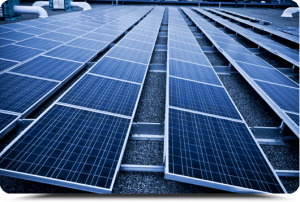 Solar panels seem like an environmental good, given the clean energy they produce. But when it comes to siting large-scale installations, particularly in the San Joaquin Valley, many traditional environmental groups, as well as agricultural leaders, have been upset with the siting decisions. They argue the facilities are harming endangered species and taking away valuable farmland.
Solar panels seem like an environmental good, given the clean energy they produce. But when it comes to siting large-scale installations, particularly in the San Joaquin Valley, many traditional environmental groups, as well as agricultural leaders, have been upset with the siting decisions. They argue the facilities are harming endangered species and taking away valuable farmland.
I’ve been involved in a project at UC Berkeley Law to lead a stakeholder-effort to find better, “least-conflict” sites for solar in the San Joaquin Valley. We’re using a user-friendly, on-line mapping tool from Conservation Biology Institute, and the stakeholders (including agriculture, ranchers, and environmentalists) are determining their criteria for “least-conflict” land and then producing maps based on them.
We’re finalizing our report on the project now, which we hope will inform state policy efforts going forward, particularly on transmission siting. But in the meantime, I co-authored with Josh Hohn an article that summarizes some of the initial findings in the latest edition of the American Planning Association’s Northern California issue [PDF]. The article starts on page 4, and here’s an excerpt discussing the project:
A recent stakeholder-driven process, led by UC Berkeley Law’s Center for Law, Energy, and Environment(CLEE), with representatives from the agricultural, range-land, conservation, and renewable developer communities, identified approximately 550,000 acres of “least-conflict” land within the San Joaquin Valley — much of that within [Westlands Water District] holdings. These are salt-affected or other-wise non-farmable lands where neither current agricultural production nor critical habitat would be significantly impacted. Putting the entire area into renewable energy development is unlikely, but a conservative assumption of 1 MW of solar PVper 5 acres equates to 110,000 MW of potential, if intermittent, capacity just on these lands. With historic peak electricity demand in the state at just over 60,000 MW, the generation capacity for solar PV in this portion of the San Joaquin Valley alone is theoretically more than enough to meet our 2030 [renewable energy] goals.
I should mention that the rest of the issue has a lot of good stuff in it if you’re interested in land use. More details on the solar report will be forthcoming early next year.
Leave a Reply
You must be logged in to post a comment.


